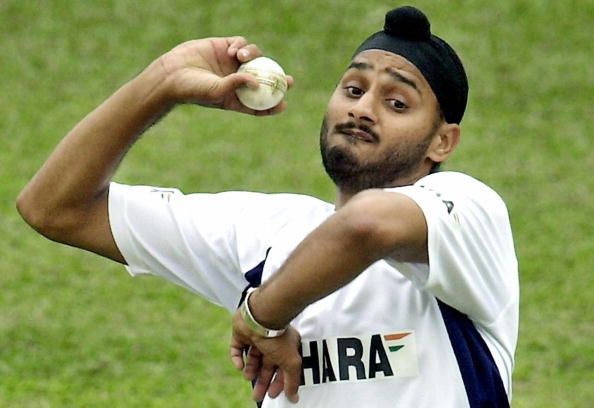
Should the 'doosra' be banned completely from cricket?
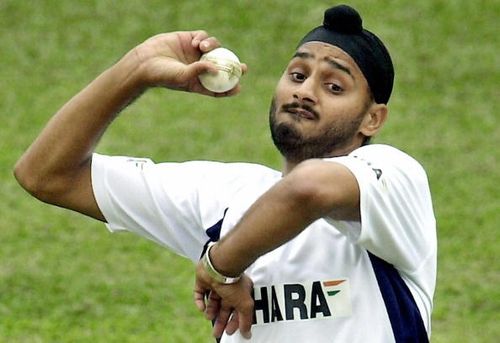
With more and more bowlers getting reported for suspect bowling action on their doosra, the debate on the legality of the delivery has once again surfaced from the rough. Before going into the legality and adaptability of the delivery, let me first explain what a doosra is, its history and action.
Doosra
The ‘doosra’ is the off-spinner’s variation. It means the ‘second one’ or the ‘other one’ and the term was coined by Pakistan wicket-keeper Moin Khan.
Inventor(s)
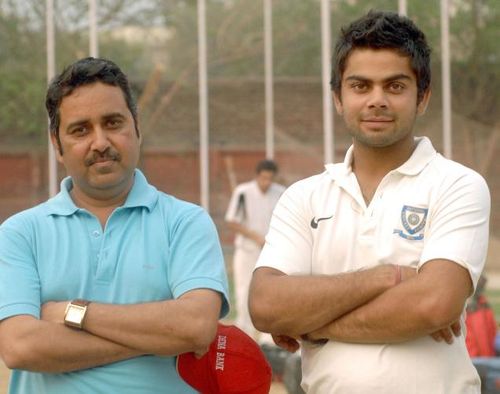
It is rumoured that Sonny Ramadin (1950-61) – a West Indian wrist spinner, who enjoyed a reputation of spinning the ball both ways was the first one to use this delivery.
India’s Rajkumar Sharma (1986-1991) – more famously known as Virat Kohli’s childhood coach – an off-spinner who played 9 first-class matches for Delhi was credited in 2009 by the NCA (National Cricket Academy, India) as the first to bowl a doosra.
Pakistan’s Saqlain Mushtaq (1995-2004) was the first bowler to use the delivery to full effect and was widely credited for exploring and popularizing the variation.
In recent times, more and more bowlers have tried their hand at the delivery that came into the limelight in the nineties.
How it works
The delivery spins in the opposite direction to the conventional off-break. In simpler words, it turns away/straightens for a right-handed batsman, while the initial movement of flight will lure him into assuming it to be a normal off-spinner. Hence, the delivery helps the spinner’s cause in making the batsmen commit into a wrong shot – resulting in a dismissal on most cases.
Click here to have a look at how the leading bowlers bowl the doosra, before moving on.
Explanation on the action
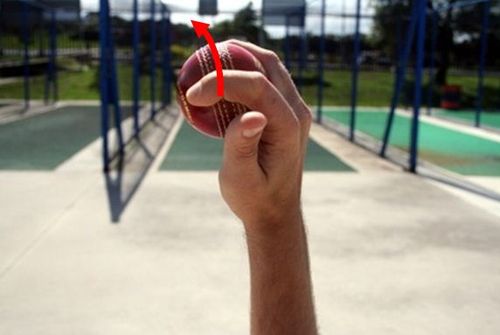
Type 1
The variation resembles an off-spinner’s action and grip, but, goes the opposite way because of the flick of the wrist which requires a slight fluctuation in the elbows from one’s usual delivery stride. Without the help of the elbow, it is difficult to deliver the variation, even if done so, gets less effective.
Therefore, a flexible wrist is the primary requirement for a spinner who wants to (legally) deliver the doosra.
Such a flexible wrist helps in generating the exact pace of one’s normal delivery, thereby, more helpful in foxing the batsman.
This is where one might hope for a hypermobility syndrome: a condition where one can move the joints beyond the average range of motion.
Rajkumar Sharma is one such bowler, who exhibited his skill to bowl the doosra without a slight straightening of his elbow.
It is unlikely to expect everyone to be under this medical condition to bowl it 100% legally. And hence, the ICC’s 15 degree permissible angle upto which the elbow can be extended comes in wristy (read handy) here.
Type 2
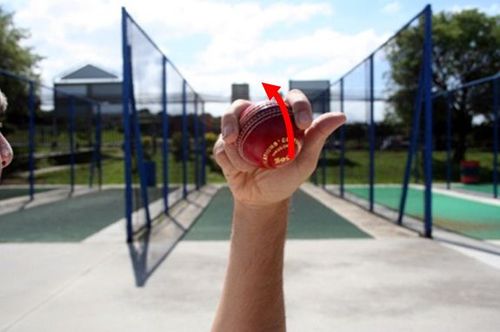
Here is the second method that that makes it slightly convenient to deliver under a big risk of getting picked by the batsman.
In the case of Saeed Ajmal, who is recently reported for a suspect action, he delivers his doosra from the back of the hand. If you have watched him deliver it, you might have surely felt some inconsistency as he will be flirting with the 15 degree angle.
It is not something to do with the doosra, but his intention of not allowing the batsman a sniff at guessing the variation. That is that simple as that.
Hence, here is the conclusion that if you have a flexible wrist and supportive elbow, the delivery can be bowled within the limitations.
Again, you can question that if the doosra is this simple in execution, provided you have the all-important ‘wrist,’ why do even some non-Asian spinners question the legality of it?
Here is the answer – As mentioned earlier, there can be difficulties in practical applications of the same and not everyone can deliver it under fair measures. A straightforward answer is that the spinners who question the legality of the doosra are generally the ones who cannot master it.
Australia and England do not generally encourage bowlers to deliver the doosra as they believe it is illegal. Shane Warne, the legendary Australian leggie, is not supportive of the usage either. James Tredwell of England is also against this, with him being an offie.
Then why do bowlers get reported and get banned?
As in the case of Shane Shillingford, Johan Botha to name a few who have been banned from bowling the doosra, their wrist/elbow are not conductive to them delivering the doosra.
Let me give you a closer look at the footage of Saeed Ajmal, to help me explain my point better.
In the above video (at 0:23), you can see a slight misbehaviour in his covered elbows, which the modern day bowlers are using to cover up their action – in case the delivery exceeds the 15 degree allowance (without their knowledge under match-pressure).
I'm not offending the Pakistani here, but, that is the case with every off-spinner these days. It is getting extremely rare to spot an offie with an unhidden elbow. Ravichandran Ashwin is the only one who does not uses anything to cover up his bowling action. Sadly, he doesn’t have a doosra to come to a conclusion.
Yes, even Harbhajan Singh – one who does deliver the doosra time and again, has been reported more than once for a suspect action. Sri Lankan legend Muttiah Muralitharan was also among the bowlers who was cleared for using it after suspect behaviour.
It doesn’t mean that the delivery is illegal. I repeat – it is just that it much more difficult to execute without a helpful wrist. Hence the ‘other one,’ has often been the subject of debate and it is not going to end in the near future. Unless every spinner, who fails to master the same, accepts their inability to bowl it efficiently under allowed limits and backs the other, this uncertainty will continue for sure.
Clarification on the legality
Assume Team X are facing Team Y in a bilateral series.
Here if Team Y is with a doosra equipped spinner, he will surely be a threat for Team X irrespective of the format. And to avoid the risk of losing wickets against a mystery bowler, it helps if you can get away with him.
Of course, if the bowler is staying within the regulations for all of his attempted doosra’s there is absolutely no problems whatsoever. This is where the situation becomes complicated. The so-called bowler will become helpless on a flat hard surface, that neither aids his natural stock delivery nor is he able to fox the batsmen.
In an attempt to pick up a wicket or two when his doosra turns easily readable, out of frustration, the bowler tends to lose his control and bowl one or two quick doosras which might and will invariably exceed the 15 degree mark.
Those occurrences of crossing the limits might occur sometimes when under pressure to bag wickets and to stop the run flow.
The perfect doosra by Rajkumar Sharma
Solution
Even the bowlers who don’t deliver the doosra, still wants to hide their arms from cameras as they are misusing the leniency unconvincingly to generating more pace on their normal deliveries. The world’s leading limited overs spinner Sunil Narine, whose style Ashwin attempted against his team unsuccessfully, reveals the real face of the bowler.
Here is what the Indian said on his experimentation: “I just wanted to see if you can get more revs on the ball if you can do a little bit with your elbow, as much as that is. You can get a lot of advantage with these things, so why should I lag behind if someone else is getting a competitive edge?”
I’m hugely surprised that the admission did not stir any controversy. In fact, the 15 degree rule was brought forward in November 2004 after the ICC had to pass Muttiah Muralitharan’s permanently bent elbow. Since then, bowlers have been taking unfair advantage with the law to leave ICC in two minds.
If they can get away by a clearance from the biomedical testing centre in Australia for a ‘clean permanent action,’ why punish the bowlers who just go wrong on one or two occasions?
Hence, to stop the unconvincing doosras from being delivered and to do away with cheaters, I suggest that a bowler shouldn’t be allowed to wear full sleeves or any protective grip bands cricketers wear for safety purposes while fielding. This will help in identifying a suspect action red handed, if one attempts to go beyond his limits.
Also, the umpires should be entrusted with more power in stopping the bowler from bowling further in the match, if the official finds the auction suspicious. This will definitely help to ensure that the doosra is clean and also to ban the ones who use rules in a cunning way and escape with chucking.